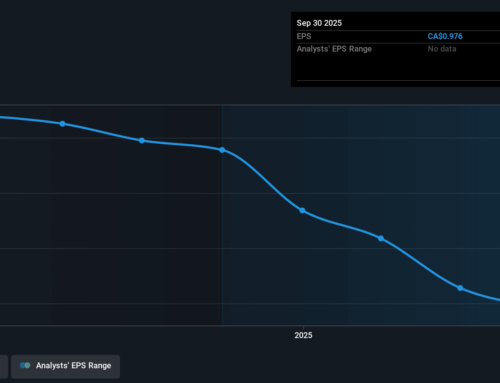Opinion: Asheville is a climate haven? Nature is telling us otherwise.
March 31, 2025

We’ve all bought into the notion at least a little bit — that these mountains protect us from the worst nature has to dish out.
I’ve been here for three decades, and every time I leave for a vacation or a concert or a visit to family “down the mountain,” I always have the same sensation upon my return: a big sigh upon my first sighting of the mountains. That morphs into a sense of security and peace once I roll into the heart of the French Broad River Valley where I’m surrounded by mountains.
It feels like an invincibility cloak of sorts, or nature’s armor.
Or at least it used to feel that way.
If I hadn’t been worried before, Tropical Storm Helene swept the illusion away like a riverside cabin on Sept. 27. Now the wildfires popping up throughout western North Carolina offer a second wave of intrusion into that mirage.
Of course, we all should know better. When my wife and I moved here in 1995, one of the first stories I wrote from Henderson County was about a forest fire warning, and the next year I covered major flooding in Chimney Rock.
In 2004, I witnessed the rescue of a stranded motorist in the Swannanoa River after hurricane remnants soaked the region and caused extensive flooding. She clung to a tree while an Asheville ladder truck extended its boom to reach her, eventually bringing her to a parking lot and safety.
In 2021 remnants of Hurricane Fred destroyed a campground in Cruso in Haywood County and claimed four lives, and I covered that, too. Flooding here is all too common, and dangerous.
So are wildfires. As of Friday, a half-dozen wildfires continued to consume thousands of acres of forestland in western North Carolina, mostly in Henderson, Polk, Transylvania and Haywood counties. They had destroyed at least 11 homes. Another fire sprang up last week in the Leicester area of Buncombe County.
Weekend rains were supposed to tamp them down, but we need a multi-day frog-choker to really make a dent.
‘Nowhere is immune to climate extremes’
For a bigger picture look at the notion of climate havens, I checked in with David Easterling, director of NOAA’s Technical Support Unit, part of the National Centers for Environmental Information in Asheville. He made it clear that the idea of climate havens is something of a myth.

“Nowhere is immune to climate extremes, sea-level rise, strong storms, drought, etc.,” Easterling said via email. “Just some places are more prone to these events than others.”
The closest you may get to a climate refuge in America would be a place like Las Cruces, New Mexico, which is elevated and semi-arid, Easterling suggested. It’s far enough inland that it doesn’t get tropical cyclone remnants, but it can still get heat waves and wildfires.
Our mountain region is a haven in at least one regard: We’re still cooler than the Piedmont and other flatland areas in the summer.
“Only a few times a summer do we exceed 90 degrees, and rarely get to 100,” Easterling said.
Hey, that’s something to hold onto, right? Not so fast, bub.
“That will likely change some in the future as the climate continues to warm,” Easterling said. “Temperatures in western North Carolina will also get warmer.”
Yeah, that’s already happening, a phenomenon I’ve noted myself. Particularly in August when the humidity rises a few notches, my once-heavenly back porch morphs into a steam room.
When we first moved here, our rental house didn’t even have air conditioning, and we got by just fine. That’d be miserable now.
In Asheville, 2024 was warmest year on record
In its Jan. 21 report, “The Weather Year in Review: Heat, Helene, and Weather Whiplash in 2024,” N.C. State University climatologists Corey Davis and Kathie Dello noted that the statewide average temperature of 61.5 degrees in 2024 ranked as our second-warmest year on record, just behind the warmest, which was 2019. They cited NCEI data.
“That means five of our state’s top six warmest years have happened since 2016, and each year in the past decade ranks among the top 22 warmest on record dating back to 1895,” they wrote. “Notably, all twelve months in 2024 were warmer than the historical average statewide. That’s only the third time for such an occurrence in a calendar year, joining 1998 and 2017.”
If you’re not damp and depressed yet, they also noted, “A few local weather stations did record their warmest years on record, including Asheville, Hickory, and Raleigh, while in Charlotte, 2024 tied 1990 as the warmest year.”
Despite Helene, 2024 featured multiple droughts across the state, although on a positive note we did break a nearly three-year snow drought with a massive .1 inch blizzard in December — easily handled with a broom — followed by a respectable 2-inch snow-sleet mess in early January.
On the wildfire front, we have lots and lots of woods in North Carolina, so it really should be no surprise that we have a lot of forest fires. As my colleague Jack Evans and I noted in a recent story about wildfire danger, between 1997 and 2020, the 21 counties that make up the region saw more than 9,000 fires burn more than 148,000 acres, according to the U.S. Department of Agriculture’s Forest Service. More than half started as debris burns.

The N.C. State climatologists said wildfire activity statewide “was about average last year following an active fire year in 2023.”
“The North Carolina Forest Service reports a preliminary total of 4,680 wildfires burning 17,220 acres on state and private lands in 2024; each of those statistics ranks near the middle of the past 10 years,” they wrote.
And then there was Helene, which claimed 106 lives and caused an estimated $54 billion in damage. And spawned tornadoes.
“Helene’s impacts included ten tornadoes as far east as Rocky Mount,” the climatologists wrote. “Those were part of an annual total of 42 confirmed tornadoes in 2024, which was the most in a year since 2020.”
New Mexico here I come!
Seriously, that won’t work, either, at least if you’re trying to avoid the heat. As our friends at N.C. State noted, “It wasn’t just North Carolina feeling the warmth last year.”
“According to independent analyses from NOAA and NASA, 2024 was the Earth’s warmest year on record,” they wrote. “If that sounds like a familiar headline, that’s because it is: 2023 had previously set the record, and each of the planet’s ten warmest years since 1850 have all occurred in the past decade.”
It’s almost like we’re in the middle of climate change or something, although that’s apparently now taboo to say under the reign of King Donald.
With a heating planet, we can expect more drought, and heavier rainstorms — and probably more disasters. The N.C. State report noted that Helene was just one of 27 climate disasters last year, each of which caused more than a billion dollars in damage.
And let’s not forget that Helene spawned more than 2,000 landslides, including the monster that claimed 13 lives in the Craigtown area of Buncombe County. Between steep slopes and heavily wooded forests, we have a lot of potential for both debris slides and wildfires.
None of this will stop folks from moving here
Of course, none of this will stop folks from moving here. We’re still better off than a lot of places, and Helene’s rainfall levels indicate it may have been a 1,000-year event.
The problem is, those events can occur more often, as the heat causes rain clouds to hold more moisture and dispense heavier rains. Early studies of Helene suggest it produced between 10 percent and 50 percent more rainfall that it would have without climate change.

Still, our mountains remain drop-dead gorgeous, we’re cooler than a lot of places, and we have a brewpub on every corner. People will not stop moving here, although the pace has slowed a little bit, according to Mike Figura, founder of Mosaic Community Lifestyle Realty in Asheville.
“Not as many people are moving here to get away from the effects of climate change as before Helene,” Figura said. “Some people still are, but it’s not as many.”
Figura, who studied climatology and urban planning at the University of Virginia and founded Mosaic in 2010, pointed out that living in or near naturally beautiful areas carries inherent risks. The closer you are to these inviting woods and hillsides, the closer you are to danger when nature shows her dark side, which is inevitable at some point.
North Carolina has pretty strong rules about what home sellers and their agents have to disclose, particularly about flooding history. It’s worth noting, though, as we did in a September story, that our flood maps date to 2010 and the risk has grown considerably.
That same year, Buncombe County adopted higher standards for properties located in steep-slope areas, and you can check if you’re in one of these so-called “overlays” online to gauge your landslide risk.
As The Watchdog pointed out in an October article, “Western North Carolina has long been known to be at particular risk for landslides and mudslides because of its steep slopes; U.S. Geological Survey maps of historical landslides show Asheville approximately at the center of the region’s high-risk zone.” Generally speaking, rainfall of 5 inches or more in a 24-hour period can trigger landslides.

In short, we have plenty of potential problems here, weather-wise. But the whole country does too, particularly as global warming continues, nearly unabated, so homebuyers everywhere have to gauge risk.
“I think the illusion of a climate haven has been shattered, not just for Asheville, but as an illusion that there is such a thing as a climate haven,” Figura said. “We all live on the same planet. Droughts, floods — this is what scientists have been talking about.”
Easterling said Asheville’s biggest issues are heavy rain from tropical storms, drought and wildfires. Of course, all of this is hard to predict, but Easterling said he expects that we will see more heavy rainfall events in the future, as warmer air holds more moisture.
“As for fires, that is possible since warming results in higher evaporation rates that can lead to more dry conditions,” Easterling said. “We don’t tend to get much in the way of tornadoes since the mountains usually break up the circulation into thunderstorms, but we can’t rule that out.”
Figura said one strategy gaining popularity among those who study climate resiliency and urban planning is to live in cities or other areas that are less prone to natural disasters, and then go visit the beautiful areas.
“There’s places that are more prone and less prone, but no place is immune,” Figura said. “And Asheville is a place that’s less prone but not immune. I think that’s an important message for people to understand.”
Hate to shatter any illusions, but he’s right.
Asheville Watchdog welcomes thoughtful reader comments about this story, which has been republished on our Facebook page. Please submit your comments there.
Asheville Watchdog is a nonprofit news team producing stories that matter to Asheville and Buncombe County. John Boyle has been covering Asheville and surrounding communities since the 20th century. You can reach him at (828) 337-0941, or via email at jboyle@avlwatchdog.org. To show your support for this vital public service go to avlwatchdog.org/support-our-publication/.
.
Search
RECENT PRESS RELEASES
Related Post



